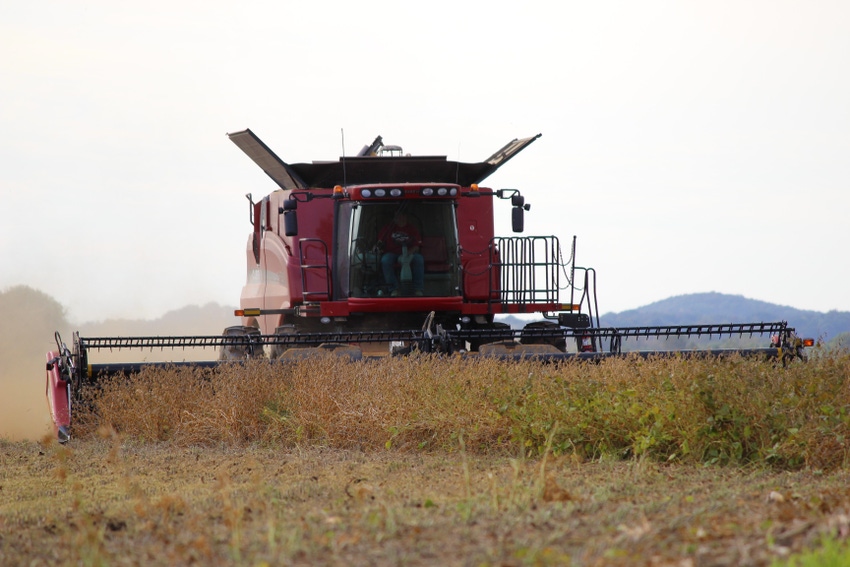October 1, 2019

Late planting pushed back the R4 growth stage, the most critical time when soybeans set pods. This year, most Missouri soybean fields did not reach R4 until late August, making September weather more important than usual.
Bill Wiebold, University of Missouri Extension soybean specialist, says September night temperatures have not been a concern until recently, when maximum temperatures reached 10 to 20 degrees above normal.
"These hot temperatures had little direct effect on soybean growth, but they increased water evaporation, and that aggravates lack of rain," Wiebold says.

Rain issues
Precipitation — too much or too little — challenged Missouri corn and soybean farmers during the entire 2019 growing season. For normal soybean and corn yields, fields need a little more than an inch of rain each week.
Too much rain during planting results in soil compaction and increases disease potential. Wet weather caused poor stands in some areas. Heavy rain also created problems in replanted fields.
One of the worst weather patterns for yield is wet spring weather preceding drought stress, Wiebold says. When this happens, root systems may not recover. Small, unhealthy root systems cannot get enough water to plants.
Dried up
The northern part of the state faced this weather pattern, with dry weather arriving as early as mid-June or July. Expect lower corn and soybean yields there as a result.
Wiebold looked at rainfall patterns for seven-day periods in September and total monthly rainfall. Lack of rain in the first two weeks of September plagued late-planted soybeans and ultra-late-planted corn. Peak demand for water happens during grain fill.
Many soybean fields are in the midst of rapid grain filling now because of late planting caused by the wet spring and normal double-cropping. Unfortunately, the weather has turned dry, with little or no rain after mid-August. A week of hot, dry weather can negate "good" weather that occurred earlier. Rain from here on out will be too late for most crops, Wiebold says.
Hot, dry weather during grain fill can result in small seeds and premature plant death. Seeds on soybean plants that die because of drought may stay green. Buyers often dock green seeds.
"Farmers needed an unusually cool and wet August and September," Wiebold says. "Some parts of the state saw that type of weather in early to mid-August, and I was optimistic. But September has been too dry and hot to maintain grain fill for late-planted soybean fields, and yield will likely be hurt."
Source: University of Missouri Extension, which is solely responsible for the information provided and is wholly owned by the source. Informa Business Media and all its subsidiaries are not responsible for any of the content contained in this information asset.
You May Also Like




